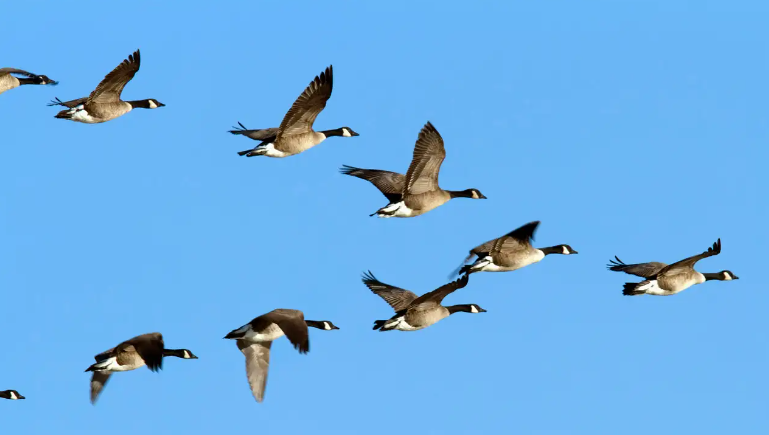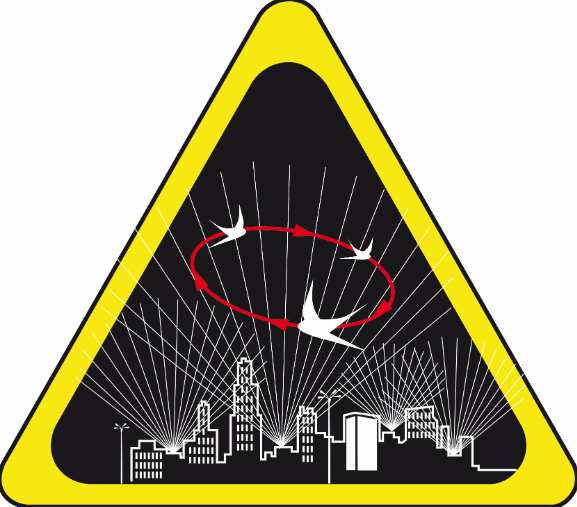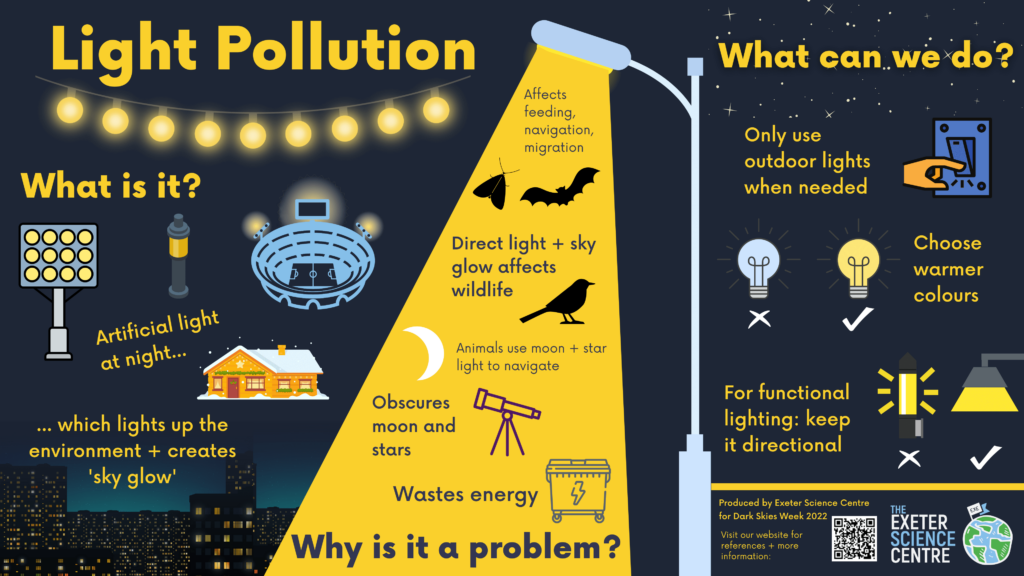Belcarra Garden Club
BC, Canada

The Effects of Light Pollution (ALAN - Artificial Light at Night) on Migrating Birds
by Les Bramley and Nora Boekhout
 |
 |
The arrival of fall brings many transformations: leaves change color, summer plants droop, the days grow shorter, and we start turning on our lights so much earlier! Looking up to the skies, we see those tell-tale “V shape” flocks of birds heading south. The “Pacific Flyway” is a major migratory route, 15,000 km (9,000 miles) extending from Alaska to Patagonia. This month Les was inspired to collect some information on migrating birds and see how they are affected by lights at night.
Migratory restlessness to start a move south is cued in birds by the shortening of daylight hours.
Change in day lengths is known as Photoperiod and birds influenced by Photoperiod are known as "Obligate Migrants". The well-known Arctic Terns migrate from pole to pole, which is a 30,000 KM round trip! The other type of migrating birds is known as "Facultative Migrants". Their migration is caused by conditions, especially food supplies. They migrate for survival’s sake.
At the peak date, September 17th, more than 9 million birds flew south overnight, (mostly from B.C.) Les thought, “Amazing! ” Then he asked himself, “How do they know this?”, and looked it up. It seems that for the last 23 years, bird movements in the atmosphere have been detected by the US NEXRAD weather surveillance network. "Outstanding!"
Many birds migrate at night using the stars and constellations to find their way. Unfortunately, light pollution is making it increasingly difficult for birds to navigate and see the stars. Additionally, they can be attracted to and disoriented by ALAN (artificial light at night), and may even start their migration too early. The experts recommend we reduce our lighting from Mid-September to Mid-October. Portland and Toronto are ahead of the game in that they issue a “Lights Out” warning for this time period. We think Vancouver and the Fraser Valley need to do the same.
You might wonder if this is an over-reaction. Consider this: on October 12, 2023, ONE THOUSAND birds died, during an apparent collision with the McCormick Place Lakeside Center in Chicago! The lights at McCormick Place were left on after hours to accommodate an event. The Washington Post reported there were warblers, woodcocks and sapsuckers among the species of dead songbirds. Chicago actually has a “Lights Out” program to combat bird strikes; too bad this building did not follow it.
So folks, please help the migrating birds next year in September and October
and reduce your lighting as much as possible to help our feathered friends. Les

image from: https://exetersciencecentre.org/nibbles/light-pollution
RELATED LINKS
Light pollution was the theme of World Migratory Bird Day (October 8, 2022).
https://www.un.org/en/un-chronicle/growing-effects-light-pollution-migratory-birds
https://darksky.org/news/what-you-should-know-about-bird-migration-and-light-pollution/
https://www.audubon.org/news/dim-lights-save-birds-night
https://exetersciencecentre.org/nibbles/light-pollution/
https://www.birdscanada.org/bird-science/canadian-migration-monitoring-network-cmmn
https://www.hellobc.com/stories/taking-flight-bcs-fall-bird-migration/
https://bcbirdtrail.ca/field-notes/birding-by-season-in-bc/